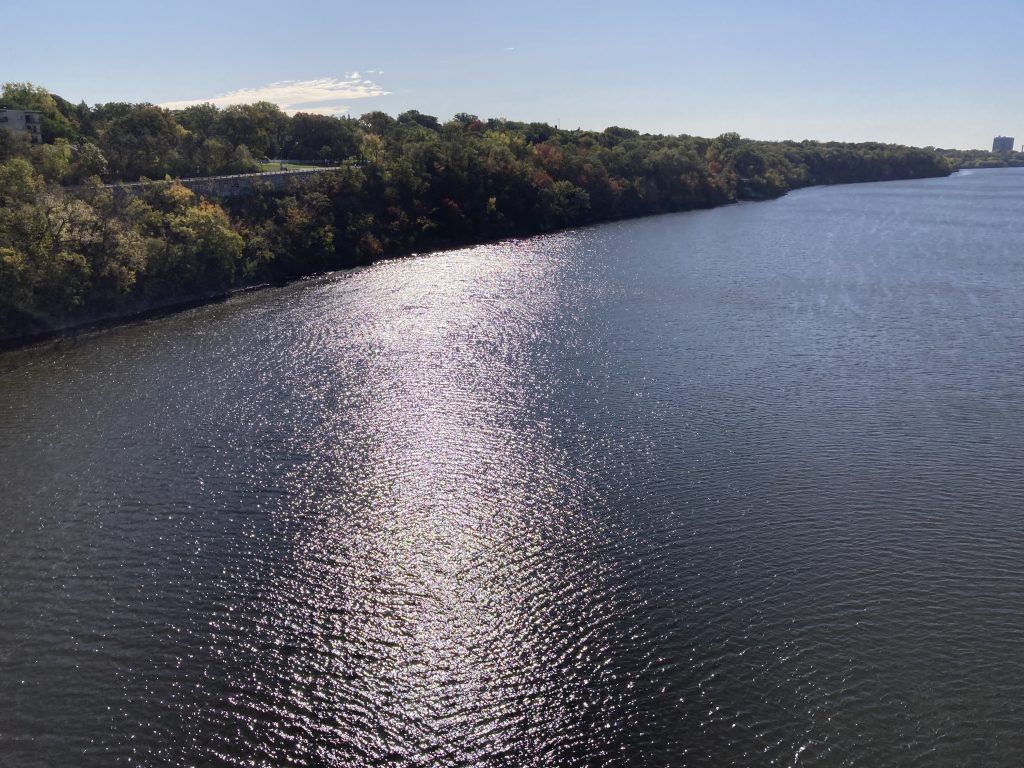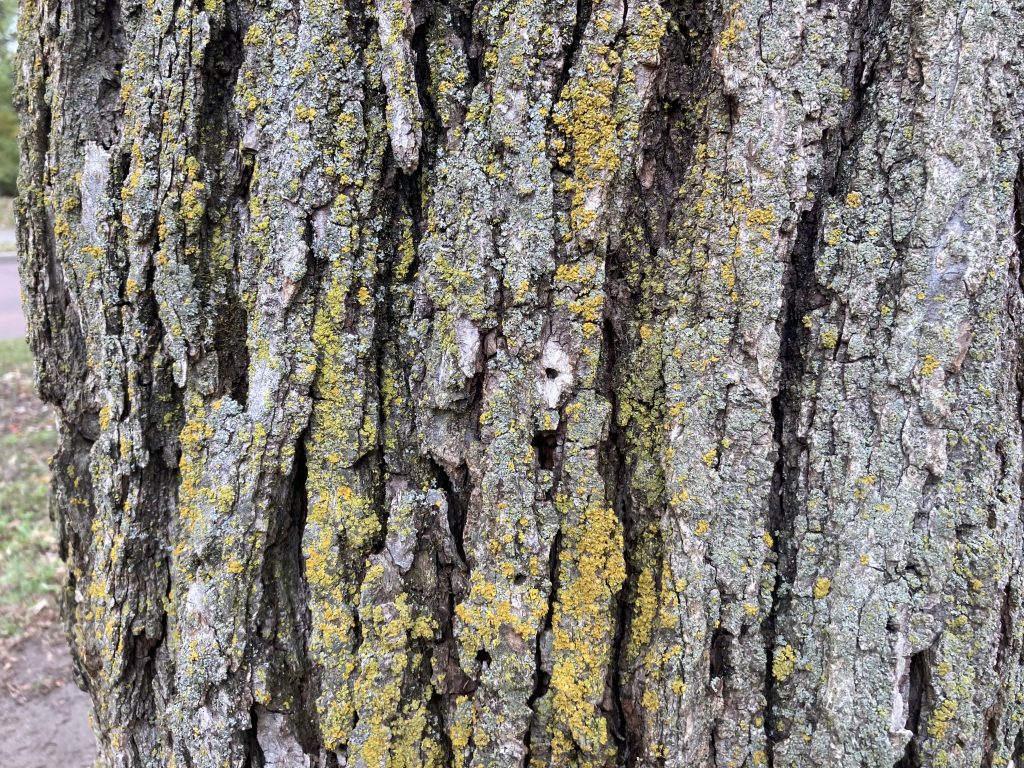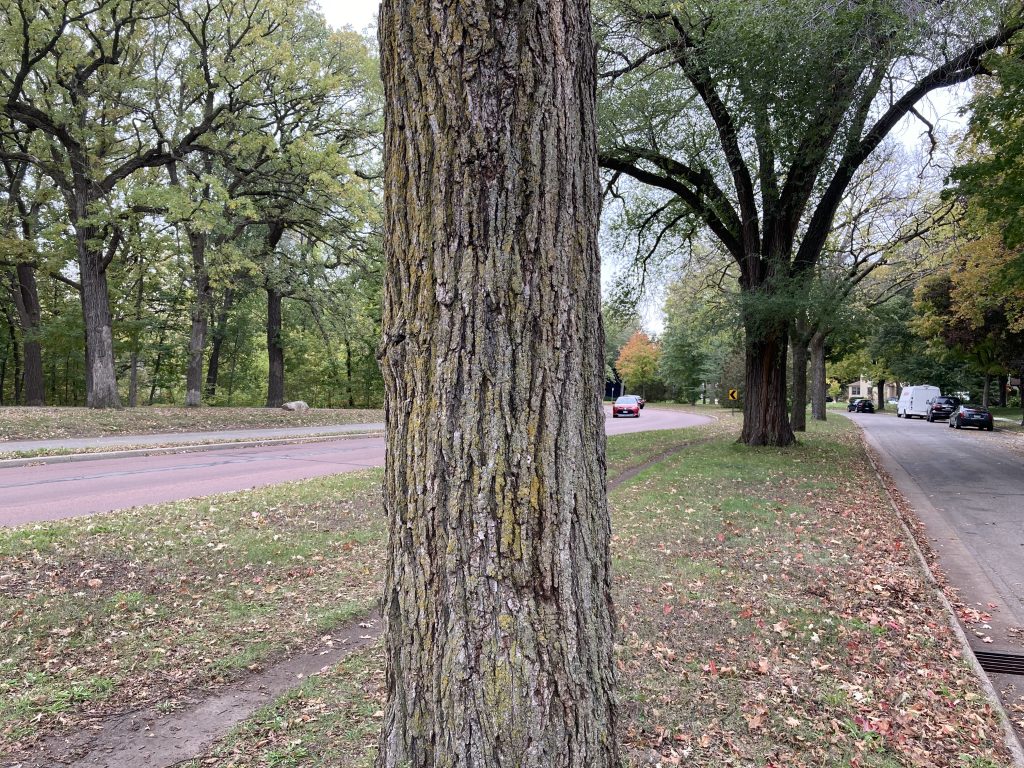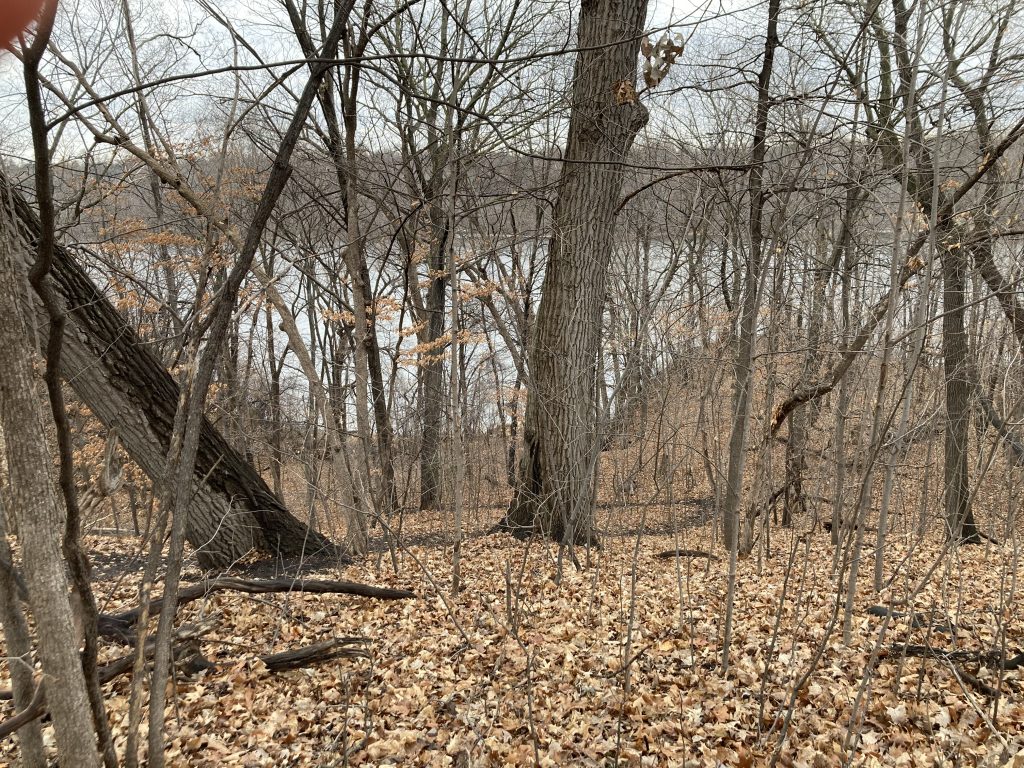For the first week, I believed that this month’s project would be the peripheral. I created the tag, peripheral, and tagged past entries. Thought about peripheral music (first, peripheral as a song lyric or title, but then as a type of music: soundtrack, score, Eno’s ambient music). Wondered what the peripheral texts for my writing were. Wrote about distraction and its connection to the peripheral. But then, on February 8th, I was reminded of a project that I had tentatively started in October, and I mostly forgot about the peripheral (again).
Before my run, while I was reviewing my Oct 2023 log entries and encountering several of my “how I see” photos, it came to me: this should be the new version of my vision poems. I want to study the ekphrasis form (An ekphrastic poem is a vivid description of a scene or, more commonly, a work of art. Through the imaginative act of narrating and reflecting on the “action” of a painting or sculpture, the poet may amplify and expand its meaning — def). Then I want to write a series of “how I see” poem/descriptions. These will be about experimenting with the form and exploring ways to describe how I see. I wrote in my notes: not about what I can’t see, but what I can. I’m also interested in experimenting with the idea of alt-text as form — I have a few sources for this. I’ll read some Georgina Kleege and her latest book, More Than Meets the Eye. These poems will be practical — describing the literal way I see — but also poetic — strange, unsettling, more than a report.
8 feb 2024
Topics
- not what I can’t see, but what I can
- revisiting the process of seeing — Dr. Margaret Livingstone, Annie Dillard, Robin Wall Kimmerer
- Georgina Kleege, art, and More Than Meets the Eye
- Victoria Chang and her latest ekphrastic poems
- Marie Howe and not looking away — studying the basic/bare details
- Ross Gay and Be Holding and entanglements
- Huidobro and glances (“Natural Forces”)
- seeing with our other senses (does this get lost in a photograph?)
- there is no little man in your brain making sense of the image
- audio descriptions
Ekphrasis Defined
- The verbal representation of visual representation
- Stages an encounter between representations in 2 mediums — verbal and visual
- Ekphrasis is the use of vivid language to describe or respond to a work of visual art
- The purpose of ekphrasis was to describe a thing with such detail that the reader could envision it as if it were present
Ekphrasis Conventions
- Speaking out: giving a voice to the mute art object, artwork speaks to the artist or the poem will speak to the mute visual artifact , poet may implore the painting/sculpture to speak or to justify the artist or poet’s work — technical term for giving a voice to the mute art object is prosopopeia
- Praise: poet/persona frequently praises the mastery of the visual artist and his work
- Paragone Competition:competitive relationship between words and images, an implicit critique of the material, its stasis, and its immutability, Poet may seek to establish superiority of words over the painter/sculptor and his material limitations by suggestion they have: more immediate access to the real; more immediate access to the divine; that one art has a more direct relationship with Truth; that one exists in either time or space and therefore is more accurately representative through the accuracy of its resemblance; more education, learning and talent or that it is less crude
- Emotional response: deeply moving visual experience that triggers a latent or unresolved emotional vulnerability, “transfixing” the poet, speechlessness, ability to “trick” the poet into believing that the work is “real”, the painting “breathes” life while the poet remains “breathless” before it
- Stasis of the art object: painting is mute poetry and poetry a speaking picture
- Enargia: to make the object lively appear before the reader’s eye through detailed description, use of sensory information, imagery, etc… In other words, so ekphrasis will also attempt to visually reproduce the art object for the reader so that the reader can experience the same arresting effect as the poet
- Actions of the painter: linger on the actions of the visual artist concentrating on the act of creation and often paralleling the act of artistic creation with divine creation
- Artist’s studio: reference or be wholly concentrated upon the artist’s studio
- Museum ekphrasis: poet is wandering through the museum looking at various pieces and each begins to bleed into the poet’s poem/thoughts
Alt-text, a twitter thread
Not describing everything, but getting to why the image is there:
I think people who find providing alt text overwhelming think too much about describing every last detail in the image, when it’s more like, ok, why did YOU post it? …focus on why you’re posting the image or what it’s supposed to do or how other people would recognize it
Alt-text predates “accessibility”:
“alt” here is short for “alternate” and originates from HTML—back in Ye Olde Days if an image took 10 minutes to load or otherwise broke, you’d provide alt text that the browser would display in place of the image so you still knew what was going on
different than an image description, alt-text is only for necessary images, not decorative ones:
and alt text is different from image descriptions; alt text describes the purpose of the image and isn’t typically included if something is purely decorative—but do note that even a gif for example carries semantic meaning and is thus NOT purely decorative
intended to be brief
alt text is meant to be short, as it would get cut off by the image bounding edges otherwise
example of alt-text vs. image description
alt text for a chart: “Graph showing increase in alt text use on Twitter”
image description for a chart: “A graph titled ‘Increase in alt text use on Twitter.’ The y-axis shows percentage of images including alt text. The x-axis shows time in years from 2008–2022…”
craft it
don’t be afraid to put your personality into alt text or be funny or use alt text to extend your shitpost, like imagine using a screenreader & your entire TL is dry descriptions until “a dog so cute I screeched” appears
look to audio descriptions for good examples of image description and using brevity
I think there’s a lot to learn from audio descriptions too for how to provide alt text & image descriptions! try turning on audio descriptions on a show or movie and observe how to pack in detail, especially given the time constraints—you only have a few seconds to describe smtg — boba fett’s audio descriptions are amazing, they’re wonderfully evocative while also including details I wouldn’t have known, not being a star wars fan (like they note that the palace is jabba’s and name which character’s helmet he picks up)
it’s subjective
accessibility is a fluid concept that depends a lot on audience; there’s no one “best” way to write alt text or an image description, because fundamentally it’s about what details other people care about, and that will change across topics and groups
Resources
- More Than Meets the Eye/ Georgina Kleege
- With My Back to the World/ Victoria Chang
- Alt-text
- Audio description as a pedagogical tool
- Ekphrasis as Eye Test/ Jane Zwart + slide show with paintings
- What is Exphrasis?
- alt text as poetry
- The Ekphrastic Review
- Conventions of Ekphrasis
- twitter thread about alt text, its origins, some ways to use it
- Bojana Coklyat in Conversation with Shannon Finnegan
- Ways of Seeing/ John Berger + BBC series
Image One

my initial description of the image from 10 oct: My view facing south from the overlook on the Lake Street bridge. The Mississippi River with trees in the background and an apartment building in the upper right corner. This photo is in color — blue water, green trees with hints of yellow and orange –but to me it looks black and white, or gray and brown.
5+ nouns / 5 adjectives / 5 verbs:
nouns: river, waves, trees, cloud, sky, building, road
adjectives: gray, shiny, glittery, small, wide, pewter, west
verbs: stretching, sparkling, sparking, waving, hovering, standing, holding up, cutting through, leading
one sentence about the most important thing in image: The only color I can see in this image is glitter.
a second sentence about the second most important thing: I stand on a bridge facing southeast and watch light reflecting off of the waves to create a glittery (or glittering or pewter) path on the otherwise dull water.
a third sentence about the third most important thing: The dark trees stand at the edge, holding back the water, holding up a road, and leading to a dark rectangular shape that I know to be an apartment building.
I took these exercises from Alt Text as Poetry Workbook. I can see potential here. Maybe sentences 1 and 2 are the same important thing?
How does this fit in with ekphrasis? Does it need to? What if I used the poem, Medical History/ Nicole Sealey, as an inspiration — listing mundane details, then ending with a stinger: The only color I can see in this image is glitter? Some of the details should involve me — as runner, the picture-taker.
Image Two

initial description of image from 12 oct: A close-up image of tree bark that is rough and brownish gray (or grayish brown). There are streaks of greenish-yellow lichen on the bark. While taking this picture, with my face close to trunk, I could see the lichen, and if I put my face close to the screen I can still see it. But at a normal (1 foot) distance, it almost blends in, not looking yellow or green but light brown.

5+ nouns / 5 adjectives / 5 verbs of first image of the trunk:
nouns: tree, bark, cracks, depressions, ridges, textures, entangled
adjectives: dark, rough, light, weathered, gray, bumpy, old
verbs: hiding, aging, enduring, exposed, weathering
one sentence about the most important thing in image: Close up, with my face almost on the bark (or the screen), I can see the green lichen near the bottom of the image, but from a foot back, the bark is only brownish-gray or light with dark depressions or rough.
a second sentence about the second most important thing: The rough texture on this bark, made visible by the constrasts between light and dark, offers an interesting pattern.
a third sentence about the third most important thing: Just off center (by less than an inch?) there’s a light spot with a dark hole in its middle that is where the bark has worn off but that looks almost like a belly button, making it impossible for me to see anything else but it, and hear only belly-button in my head instead of tree or bark.
Image Three

original description: My view from above the gorge: bare limbed trees, all trunk and thin branches. A few trunks are thick — like the one near the center of the image or the one leaning on the left side — but most are thin, creating a transparent screen between runner (me) and river. The ground, in the bottom third of the picture, is mostly dead, curled-up brown leaves. Sometimes, this is what I see even when there aren’t thin, bare branches everywhere — my view slightly obscured by something in the way — dead cone cells, I think — creating fuzz or static or a slight pulsing or wavering of lines. Also, if this picture were in black and white I wouldn’t be able to tell the difference. Often I have to ask Scott: is this in color or black and white?
5 nouns/ 5 adjectives / 5 verbs
nouns: tree, trunks, leaves, river, twigs, bank, bramble, sky, veil, net, screen
adjectives: brown, thin, thick, pale, blue, gray, soft. cluttered, tangled, obscured, disoriented
verbs: blocking, concealing, decaying, settled, crowding (out), decomposing, swirling
one sentence about the most important thing in image: This cluttered view of bare trunks and thin branches creates a screen between runner (me) and river and resembles what I sometime see even when there aren’t thin, bare branches everywhere — my view obscured by something in the way, that I can’t move, that keeps the real (focused, clear, open) view just out of reach.
a second sentence about the second most important thing: The image is only of swirling forms — tree, leaf, river — as my eye struggles (and fails) to land on solid lines, instead bouncing from branch to trunk to leafy floor to river to sky to branch again. (This cramped, thickly tangled space overwhelms my eyes and my brain.)
a third sentence about the third most important thing: With its bare ground and dead leaves, it looks like this picture should be of the gorge in November or April, but it was taken in one of the first Februarys without at least 1/2 foot of snow on the ground.
The most important thing about this image is how the branches create a net which mimics how my vision often works — I can almost see what’s there, but not quite. Secondary, but connected, is the feeling of being disoriented, off, almost but not quite, untethered, which comes from swirling forms and the climate crisis — there’s almost always snow on the ground here in February. Where are my Minnesota winters?
a shift away
In the early morning of Sunday, February 18th, I woke when my calf cramped. Before it really hurt, it stopped. My calf was sore the next day but didn’t hurt when I ran. So I ran — almost 6 miles, then another 5 the next day. After my run on February 19th, while writing the log entry for that day, something unsettling happened: I began getting brief waves of a slight ache then a tightening. They happened all day, which made me anxious. It also made me shift away from studying how I see and ekphrastic poems to figuring out how to write about and deal with my anxiety over actual and possibly-coming-in-the-future pain. For the rest of the month, I wrote about pain and how different runners handle it and the body and anxiety.
more from the end of march
The ekphrasis keeps returning! I think this might be my next big thing (I don’t want to say project). I signed up for a one-day zoom class on the exphrasis on April 20th. And I’ve continued to read and write about ekphrasis poems, including a Paris Review essay about James Schuyler. Here are a few notes from that essay:
. . . Schuyler’s description of the flower transforms it into art, and that this kind of transformation is his signature poetic activity; it happens again and again in his poems: he describes what he sees before him as if it were a painting so that observation of the natural world becomes ekphrasis. That’s why—to skip down a little—the leaves are likened to a rug, crossing outside and inside, nature and culture, and those leaves “set off” the gray the way a painter or sharp dresser uses one color to set off or complement another, why the air is like a made thing, too, if one you eat, and why the bluet is called “the focus,” the way art critics say something is “the focus of the composition.” Schuyler’s words are paintbrushes, what he describes becomes a painting (though he treats it as already painted)—paint, a medium that splashes and then holds. There are examples of this everywhere in his books. In “Evenings in Vermont,” for instance, a rug again mediates between inside and outside, art and nature: “I study / the pattern in a red rug, arabesques / and squares, and one red streak / lies in the west, over the ridge.” In “Scarlet Tanager,” the bird in the tree provides “the red touch green / cries out for.” In “A Gray Thought,” “a dark thick green” is “laid in layers on / the spruce …” And so on. Touches, layerings: color as paint, natural phenomena perceived as art.
It’s This Line / Here” : Happy Belated to Birthday James Schuyler
This idea of natural phenomena as art and of Schuyler as describing flowers with painting terms and of him doing ekphrastic poems might be a way into my “How I See” ekphrasis project!
Here’s some more analysis to ponder:
There is a mild modernism here that reenchants the world—barely, briefly—by converting what’s merely there into significant form so that the landscape becomes a history of small artistic decisions. Whose decisions, whose touches and layerings? Not God’s, and not quite Stevens’s “major man” reinvesting the world with meaning through the powers of poetic imagination. But not not that either: It’s more like a minor man, who has looked at a lot of good paintings, and also looked—in a lot of pain—out of the window (another frame) of Payne Whitney (the mental hospital where Schuyler spent some time; “Salute” was written in Bloomingdale Hospital in White Plains). Williams said “no ideas but in things,” Stevens said that poetry’s power is “the power of the mind over the possibilities of things,” Schuyler oscillates between them. Schuyler is closer to Williams in the attention to mundane speech and the mundane things at hand (e.g., a Carr’s cracker; which is not to say Stevens had no concern with dailiness, or “ordinary evenings”), crucially closer to Williams in enjambment as the foundational poetic technique (I think of Spring and All: “so that to engage roses / becomes a geometry—”). But Schuyler is a little more like Stevens in the project of imaginative redescription: bluet, blue flower, blue guitar. The literary genealogy doesn’t really matter (and one could configure it differently); my point is that the magic of Schuyler is that you feel nature becoming art as you read. Or you feel the effort to make it so, its fluctuations, often its failure.
Of course, he’s not describing an actual painted image, but making a poetic one; Schuyler is composing the scene, the small decisions are his, but it feels like he’s engaging another medium, and so the poet’s act of creation is smuggled in, as if he were just looking at somebody else’s representation of the view. This gives his voice a kind of secondariness, a kind of modesty—I’m not the visionary, I’m just reviewing the visions for Art News (where he was an associate editor).